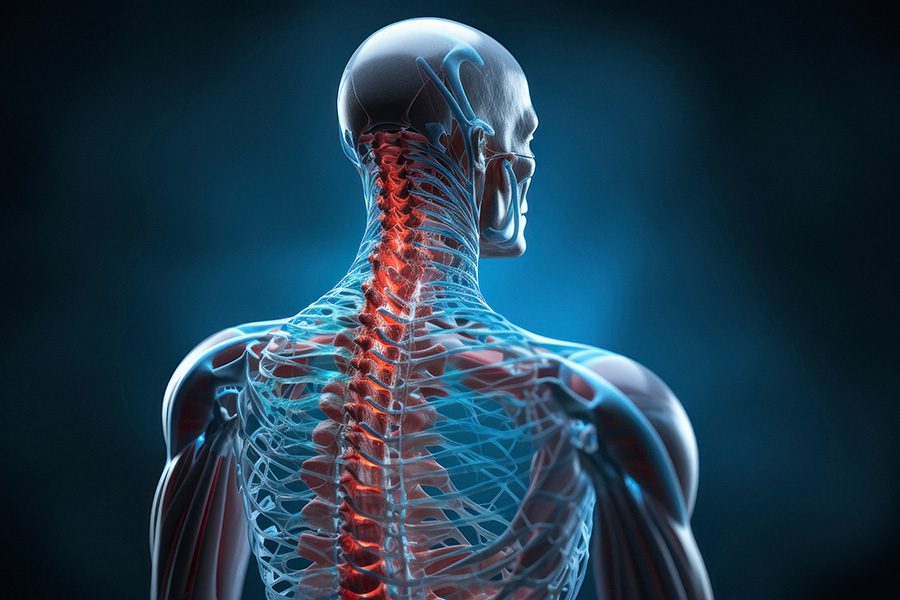IE/BME's Brad Duerstock, collaborators to develop medical device with DOD funding

Bradley Duerstock, professor of practice in the School of Industrial Engineering and the Weldon School of Biomedical Engineering, and his collaborators at the Indiana University School of Medicine have received a $1.5 million Translational Research Award from the U.S. Department of Defense.
The award will fund research to further develop a patent-pending physiological monitoring device for autonomic dysreflexia (AD), a life-threatening condition that usually develops after a spinal cord injury at or above the T6 vertebra. The device detects AD non-invasively using sensors and a controller. It measures the heart's electrical activity, skin nerve activity, galvanic skin response and skin temperature.
“The device extracts features from the measurements and classifies them to identify the onset of AD using a machine learning model,” Duerstock said. “Upon detecting AD, the device notifies the subject and their caregiver or medical professional.”
The award is the second that Duerstock and his collaborators have received through the DoD’s Congressionally Directed Medical Research Programs (CDMRP). IU School of Medicine’s Thomas H. Everett, associate professor of medicine and investigator in the school’s Krannert Cardiovascular Research Center, and Dr. Matthew J. Mellon, associate professor of urology, are Duerstock’s collaborators.
Research about the device has been published in the peer-reviewed journals Frontiers in Neuroinformatics, IEEE Journal of Translational Engineering in Health and Medicine, Neurotrauma Reports and Scientific Reports.
According to the Cleveland Clinic, around 17,000 Americans each year experience a spinal cord injury. Up to 70% of people with a spinal cord injury above the T6 vertebra develop AD. During an AD episode, the body senses a noxious stimulus below the damaged vertebra and responds by constricting the blood vessels in the lower part of the body, causing a rapid increase in blood pressure.
In 85% of the episodes, the stimulus is a distended bladder, a clogged Foley catheter or a urinary tract infection. A paper in the Canadian Medical Association Journal said other stimuli that could lead to AD episodes include bladder or kidney stones, fecal impaction, fractures, hemorrhoids, invasive testing, menstruation, pressure sores and sexual intercourse.
AD episodes increase the risk of stroke by 300-400% and can occur up to 40 times per day. Patients and their caregivers manage most AD episodes by themselves by finding and mitigating the source of the noxious stimulus. Medical professionals may rarely see life-threatening AD episodes, which means they could be unfamiliar with early recognition or protocols for immediate treatment. Additionally, Mellon said many of AD episodes are unrecognized by the individual themselves, leading to chronic health deterioration.
Medical professionals traditionally use blood pressure monitoring to diagnose AD. This method is impractical for continuous monitoring because it restricts a person’s activities and can be affected by movements like wheeling or transferring. The non-invasive device developed by Duerstock, Everett and Mellon can be integrated onto a wearable device.
In tests of rodents with spinal cord injuries, the system rapidly detected AD with 93.4% accuracy. In humans with chronic spinal cord injuries, AD systems were confirmed with 94.1% accuracy.
Duerstock said the $1.5 million grant from the CDMRP will advance testing the non-invasive device in human participants with spinal cord injuries that experience AD.
“We had developed our prototype device using rodent studies and current preclinical testing in human participants at IU Health Methodist Hospital in Indianapolis,” Duerstock said.
“This second grant allows us to expand our trials to home testing and offer this resource to individuals who may have mobility and transportation challenges that limit access to medical services,” Mellon said.
Duerstock has disclosed the physiological monitoring device for AD to the Purdue Innovates Office of Technology Commercialization, which has applied for a patent to protect the intellectual property.
For information about participating in the clinical testing using a wearable device for everyday use, contact Duerstock at bsd@purdue.edu.
